
Proud of Our People! Sergei Eisenstein: He Turned Filmmaking Into Art
/ Главная / Russkiy Mir Foundation / Publications / Proud of Our People! Sergei Eisenstein: He Turned Filmmaking Into ArtProud of Our People! Sergei Eisenstein: He Turned Filmmaking Into Art
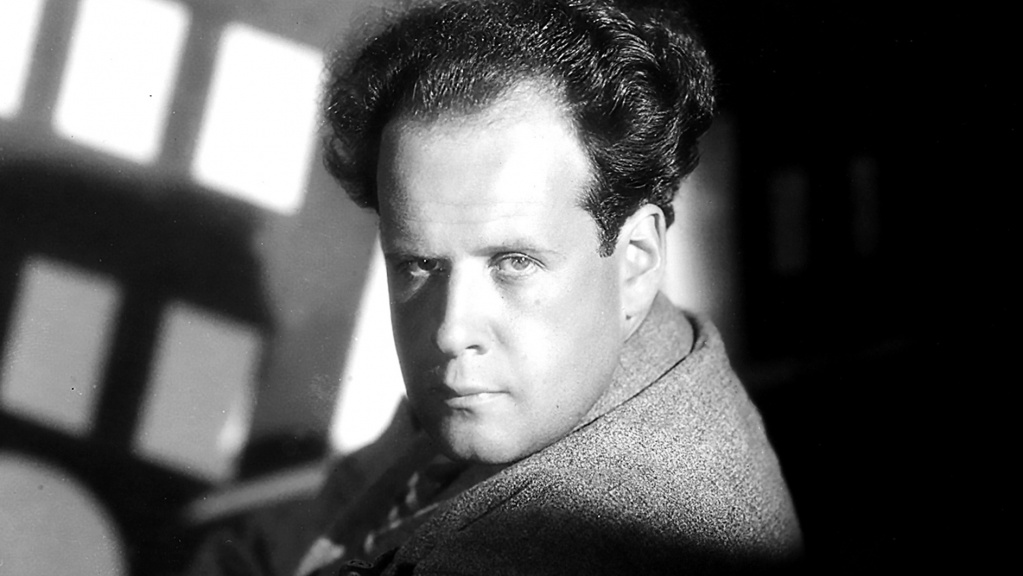
Sergei Eisenstein. Photo credit: kursk-kino.ru
Sergei Eisenstein used to say that his artistic talent was awakened by the revolution. Had it not been for the tremendous turnover in Russia's life in October 1917, he would have followed in his father's footsteps and become an engineer and architect. Nevertheless, the vortex of the revolution brought him above all the freedom of self-identification. He used his talent to find ways to reach the audience through art. He succeeded beyond all expectations. His The Battleship Potemkin was acknowledged as the greatest film ever made.
“Time of Trouble”
Sergei Eisenstein was born in Riga which was part of the Russian Empire back then on January 10 (22 O.S.), 1898. He described his childhood as a "time of trouble" in his memoirs despite the fact that his family was very prosperous and respected in the city. However, his parents often quarreled as their affections had faded shortly after the birth of their only son. Finally, they divorced. His mother went home to St. Petersburg, and Sergei had to stay with his father.
His father, Mikhail Eisenstein, was a rather extraordinary person and a man of many talents. He came from a Jewish merchant family in the Kiev Governorate. After serving as a civil engineer, he was promoted to the rank of State Councilor, which entitled him to hereditary nobility. He was well-known in Riga for his fondness for theater and opera. Yet his major contribution can be seen in the architectural look of the city. The architecture was his hobby, and he admired the ornamental art nouveau style in particular. Buildings designed by Mikhail Eisenstein still delight tourists in Riga with their exquisite architectural elements and are a decoration of the city's skyline.
Sergei loved and respected his father and took after him in everything he did. According to Sergei Eisenstein's memoirs, he never smoked because his father had never done so. Not surprisingly, having finished a non-classical secondary school, Sergei followed in his father's footsteps and entered the St. Petersburg Institute of Civil Engineering. In the spring of 1917, he was called up for military service and assigned to the School of Warrant Officers of the Engineering Troops. The fall of 1917 drove father and son apart once and forever. Mikhail Eisenstein emigrated to Berlin and died there in 1920. Sergei embraced the October Revolution with all his soul and joined the Red Army as a volunteer.
It must be said that he managed to reveal his artistic talents rather fast. He designed theatrical scenery for productions where he was involved as a director and actor. He also painted campaign trains. "The revolution granted me the most significant thing in my life - it turned me into an artist. Had it not been for the revolution, I would have never broken the tradition of being an engineer that had descended from father to son. I had the potential and the desire, but only the revolutionary vortex gave me the fundamental thing - the freedom of self-identification," he wrote in his memoirs.
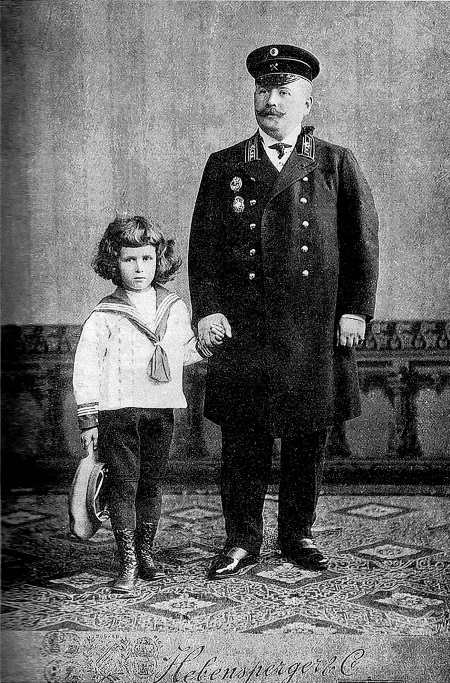
Mikhail Eisenstein with son. Photo credit: libmir.com"Arrangement of Attractions"
After his discharge from the army, Mr. Eisenstein arrived in Moscow in the fall of 1920. He found a job as a set decorator at the First Workers' Theatre. He started his training with Vsevolod Meyerhold at the Higher Director's Courses.
Mr. Meyerhold was an avant-garde artist. He used to explore new ways of introducing revolutionary art to the public. However, his student promptly took a step further. As a director, he staged Enough Stupidity in Every Wise Man by Alexander Ostrovsky. However, the play could be guessed by the names of the characters only. Everything else was nothing but the director's improvisation. The stage was turned into a circus arena. Actors were dancing on a rope over the audience's heads. They sang romances and jolly verses and alternated them with revolutionary slogans. There was also a short film clip that was shown at the same time. Mr. Eisenstein described it as an "arrangement of attractions" and explained that the central objective was to expose the audience to "powerful sensual impact". The audience was definitely stunned by the spectacular remake of a familiar classic.
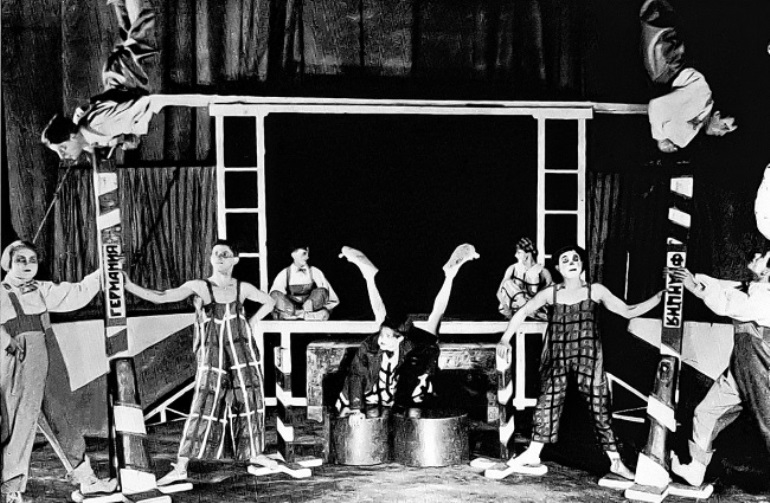
Photo credit: libmir.com
Mr. Eisenstein left the theater pretty quickly as it did not satisfy his aspirations in terms of experimenting with the psycho-emotional impact on the audience. Cinema, on the other hand, proved to be the most appropriate platform for the genius director's "arrangement of attractions".
Most Important Art of All
In the 1920s, Anatoly Lunacharsky was in charge of culture and education in the Soviet government. He popularized Lenin's quote, which became a winged phrase: "For us, cinema is the most important art of all." As an extension to this point, the first leader of the Soviet state said that "the cinema will be one of the most powerful means of public education in the hands of true representatives of socialist culture."
It is unclear whether Sergei Eisenstein read Lunacharsky's memoirs, yet that was his understanding of the filmmaker's mission: to influence the public through cinematography. "I have never believed in art for art's sake. My mission has always been to affect feelings and thoughts, to influence the psyche and, by doing so, to shape the audience's mentality in a desired, necessary, selected direction," wrote Sergei Eisenstein.
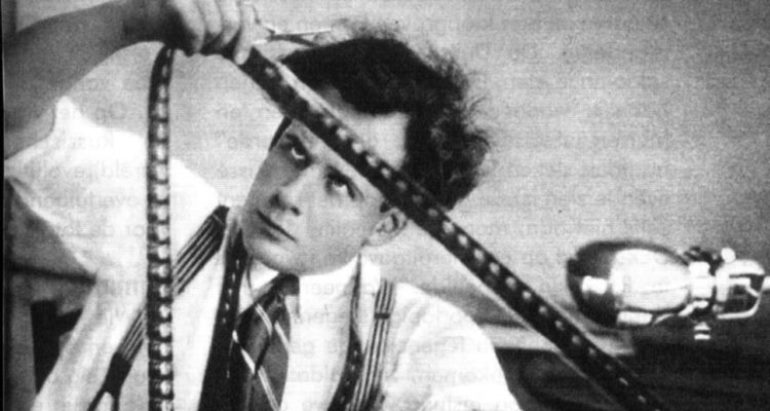
Photo credit: Senses of Cinema
In other words, the action plan was as follows: cinematography affects the audience's psyche, transforming their worldview, and after that people begin to transform the life around them. This was an ingenious discovery by Sergei Eisenstein. Earlier the cinema was perceived only as a light entertainment and featured an alternation of funny episodes and love drama scenes.
Sergei Eisenstein at the age of 25 had very different objectives. He intended to make From the Underground to the Dictatorship, a series of seven films on the revolutionary movement in Russia. However, the entire project was never implemented. Strike, the only film of the planned series was released in 1925. It was about workers in a factory who organized a strike demanding a shorter workday and higher wages. As a response to the peaceful demonstration, however, Cossacks and policemen shot the workers and suppressed the protest. The final credits of the film said: "Remember it, Proletarian."
The director adopted many innovative techniques in shooting from different angles and in cutting the film. For instance, the scene where workers had been shot was mounted with the scene where the cattle had been slaughtered in the slaughterhouse. Another innovation was filming in the newsreel genre. Film critics recognized the film as a major event. However, the audience did not appreciate the new artistic language.
Greatest Film Ever Made
Still, the Soviet government praised the young director's work and assigned him to make a film about the Revolution of 1905. Having arrived in Odessa for shooting, Sergei Eisenstein changed the concept of the film in process of making it. Thus, the idea for The Battleship Potemkin originated. The director's primary objective was to convey the revolutionary enthusiasm and the invincibility of the people's forces. He succeeded in it perfectly.
The dramaturgical culmination of the film is the scene at the Potemkin Stairs in Odessa. The city's inhabitants come for the funeral of a sailor from the Battleship Potemkin who was killed by officers. They are greeted by his revolutionary comrades. Then, a row of soldiers with rifles appears at the top of the stairs. They start shooting everyone in sight.
This scene's visuals evoke a strong emotional response even today, almost a century after the film's release. The crowd of unarmed people is running down the stairs, stumbling and falling. They are followed by those who will kill them, a kind of heartless force, an execution machine. All the emotional methods are masterfully used by the director. The deaths of children and their mothers are shown twice but very differently. When the baby stroller rushes down the stairs as the mother loses her hold on it being killed by soldiers, this scene is much more powerful than the one with falling dead bodies. Obviously, this senseless execution of innocent people, including children, evoked the most intense emotional response from the audience watching the film only seven years after the October Revolution.
The film was released as early as December 1925. Audience around the world was overwhelmed by it. Lion Feuchtwanger, a German writer, reported that the film "recreates the distinctive nature of the Russian Revolution of 1905, the sense of its importance, its enthusiasm. Thus, the film wins over both the hesitators and the opponents." In 1958, based on the results of an international poll of critics, The Battleship Potemkin was declared the first of the 12 best films of all time (110 votes out of 117). And the famous American director Francis Ford Coppola confessed that this film by Sergei Eisenstein had inspired him to become a film director, "It was a black and white silent film but sometimes it felt as if rifle shots could be heard from the screen. I knew that day what I was going to be." Mr. Coppola sold a car and bought his first movie camera.
"Patriotism is My Theme"
Sergei Eisenstein made another film about the revolution two years later. It was October: Ten Days That Shook the World about the events of 1917. The first character who acted as Lenin appeared in this film. A simple worker who looked very much like the Revolutionary leader was the actor. It should be noted that later the ordinary audience perceived this feature film as a newsreel of those dramatic developments. The events of October 1917 were perceived through October: Ten Days That Shook the World. In this sense, the director's mission was successfully completed.
This was followed by a long pause in filmmaking. In 1929 he went to the U.S. For three years, he lectured there about Soviet cinematography and wrote several screenplays for Hollywood, which, however, were not filmed. Later he headed to Mexico and started shooting a film about the revolutionary movement in that country. However, the film was not finished because there was no financing. Furthermore, the director received an indignant telegram from Joseph Stalin where he called Mr. Eisenstein a deserter.
His next successful film was shot only in 1938. Alexander Nevsky was also a masterpiece. At that time, the USSR was preparing for the upcoming war, and the film (with sound) where the Russian prince fought the German wretch knights was a great success.
The film shows Prince Alexander Nevsky as a warrior who defends his homeland, rather than as an "exploiter of the working peasantry". Mikhail Romm shared the story of his discussion with Sergei Eisenstein about the film. Mr. Romm thought it would be better to shoot a film about Kuzma Minin and Dmitry Pozharsky because there was more information about that epoch. And what was known about Alexander Nevsky? "That's why," replied Mr. Eisenstein, "I have to choose Alexander Nevsky. The way I do, that's the way it's going to be."
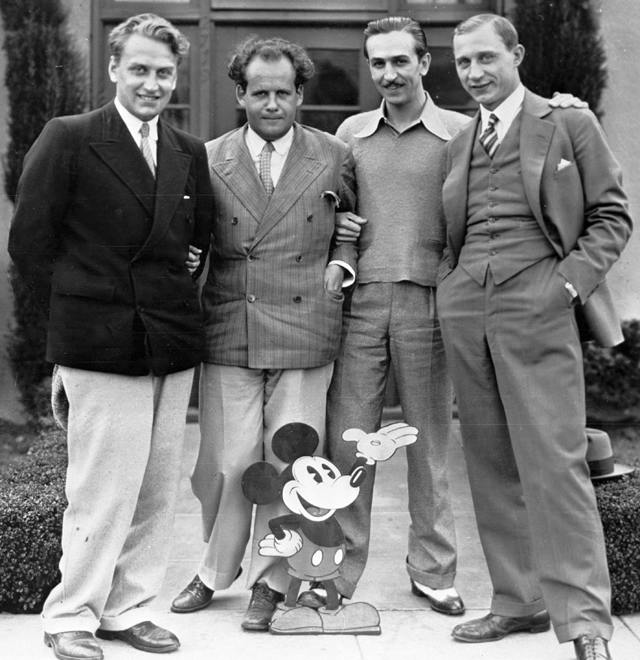
Sergei Eisenstein with Georgy Alexandrov, Walt Disney, and Edouard Tisse in Hollywood, 1930. Photo credit: wikipedia.org
The director wrote of the film: "Patriotism is my theme. We want our film not only to further strengthen those who are in the midst of the struggle against fascism but also to inspire vigor, courage, and confidence in those parts of the world where fascism is believed to be undefeatable. It was in this film that we hear the catchphrase-to-be: "Whoever comes to us with a sword shall perish by the sword! This is what our Russian land takes and will forever take its stand on."
Ivan the Terrible: Success and Failure
Ivan the Terrible was the last film by Sergei Eisenstein. Its shooting began in the midst of the Great Patriotic War in 1943. The first part of the film was released in January 1945. Its second title was For the Great Tsardom of Russia. The film was enthusiastically acclaimed by both critics and viewers. Charlie Chaplin confessed that he was simply stunned by the film and described it as "the greatest achievement in the genre of historical films." However, its second part, Boyars' Сonspiracy, faced a sharply negative reaction from the authorities. The director was harshly criticized for showing the oprichnik army as "a gang of imbeciles similar to the Ku Klux Klan", while the tsar looked as a feeble person lacking willpower, like Hamlet.
This film was not released until 1958. However, the director didn't get to see it. Sergei Eisenstein took his film's fate to heart and worked hard to improve it to the last. On the night of February 11, 1948, he died of a heart attack. He lived for 50 years only. Nevertheless, Sergei Eisenstein had achieved a lot. His artistic methods are still studied by filmmakers-to-be all over the world, and his films are even used as teaching aids. Mr. Eisenstein was rightly referred to as the "Renaissance Man" for his broad and profound knowledge in a wide range of fields of science and art. His life and work will inspire many more people who are in love with the art of cinematography.
New publications

 Mikhail Kalatozov, a director who transformed the world of cinematography in many ways, was born 120 years ago. He was a Soviet film official and a propagandist. Above all, he was capable of producing movies that struck viewers with their power and poetic language.
Mikhail Kalatozov, a director who transformed the world of cinematography in many ways, was born 120 years ago. He was a Soviet film official and a propagandist. Above all, he was capable of producing movies that struck viewers with their power and poetic language.  Ukrainian authorities have launched a persecution campaign against the canonical Ukrainian Orthodox Church (UOC), the biggest one in the country's modern history. Over the past year, state sanctions were imposed on clergy representatives, searches were conducted in churches, clergymen were arrested, criminal cases were initiated, the activity of the UOC was banned in various regions of the country, and monasteries and churches were seized.
Ukrainian authorities have launched a persecution campaign against the canonical Ukrainian Orthodox Church (UOC), the biggest one in the country's modern history. Over the past year, state sanctions were imposed on clergy representatives, searches were conducted in churches, clergymen were arrested, criminal cases were initiated, the activity of the UOC was banned in various regions of the country, and monasteries and churches were seized.  When Nektary Kotlyaroff, a fourth-generation Russian Australian and founder of the Russian Orthodox Choir in Sydney, first visited Russia, the first person he spoke to was a cab driver at the airport. Having heard that Nektariy's ancestors left Russia more than 100 years ago, the driver was astonished, "How come you haven't forgotten the Russian language?" Nektary Kotlyaroff repeated his answer in an interview with the Russkiy Mir. His affinity to the Orthodox Church (many of his ancestors and relatives were priests) and the traditions of a large Russian family brought from Russia helped him to preserve the Russian language.
When Nektary Kotlyaroff, a fourth-generation Russian Australian and founder of the Russian Orthodox Choir in Sydney, first visited Russia, the first person he spoke to was a cab driver at the airport. Having heard that Nektariy's ancestors left Russia more than 100 years ago, the driver was astonished, "How come you haven't forgotten the Russian language?" Nektary Kotlyaroff repeated his answer in an interview with the Russkiy Mir. His affinity to the Orthodox Church (many of his ancestors and relatives were priests) and the traditions of a large Russian family brought from Russia helped him to preserve the Russian language.

 The leaders of the Friends of the Great Russia cultural association (Amici Della Grande Russia) in Italy believe that the Western policy of abolishing Russian culture in Europe has finally failed. Furthermore, it was doomed to failure from the beginning.
The leaders of the Friends of the Great Russia cultural association (Amici Della Grande Russia) in Italy believe that the Western policy of abolishing Russian culture in Europe has finally failed. Furthermore, it was doomed to failure from the beginning.  Name of Vladimir Nemirovich-Danchenko is inscribed in the history of Russian theater along with Konstantin Stanislavski, the other founding father of the Moscow Art Theater. Nevertheless, Mr. Nemirovich-Danchenko was a renowned writer, playwright, and theater teacher even before their famous meeting in the Slavic Bazaar restaurant. Furthermore, it was Mr. Nemirovich-Danchenko who came up with the idea of establishing a new "people's" theater believing that the theater could become a "department of public education."
Name of Vladimir Nemirovich-Danchenko is inscribed in the history of Russian theater along with Konstantin Stanislavski, the other founding father of the Moscow Art Theater. Nevertheless, Mr. Nemirovich-Danchenko was a renowned writer, playwright, and theater teacher even before their famous meeting in the Slavic Bazaar restaurant. Furthermore, it was Mr. Nemirovich-Danchenko who came up with the idea of establishing a new "people's" theater believing that the theater could become a "department of public education."  "Russia is a thing of which the intellect cannot conceive..." by Fyodor Tyutchev are famous among Russians at least. December marks the 220th anniversary of the poet's birth. Yet, he never considered poetry to be his life's mission and was preoccupied with matters of a global scale. Mr.Tyutchev fought his war focusing on relations between Russia and the West, the origins of mutual misunderstanding, and the origins of Russophobia. When you read his works today, it feels as though he saw things coming in a crystal ball...
"Russia is a thing of which the intellect cannot conceive..." by Fyodor Tyutchev are famous among Russians at least. December marks the 220th anniversary of the poet's birth. Yet, he never considered poetry to be his life's mission and was preoccupied with matters of a global scale. Mr.Tyutchev fought his war focusing on relations between Russia and the West, the origins of mutual misunderstanding, and the origins of Russophobia. When you read his works today, it feels as though he saw things coming in a crystal ball...